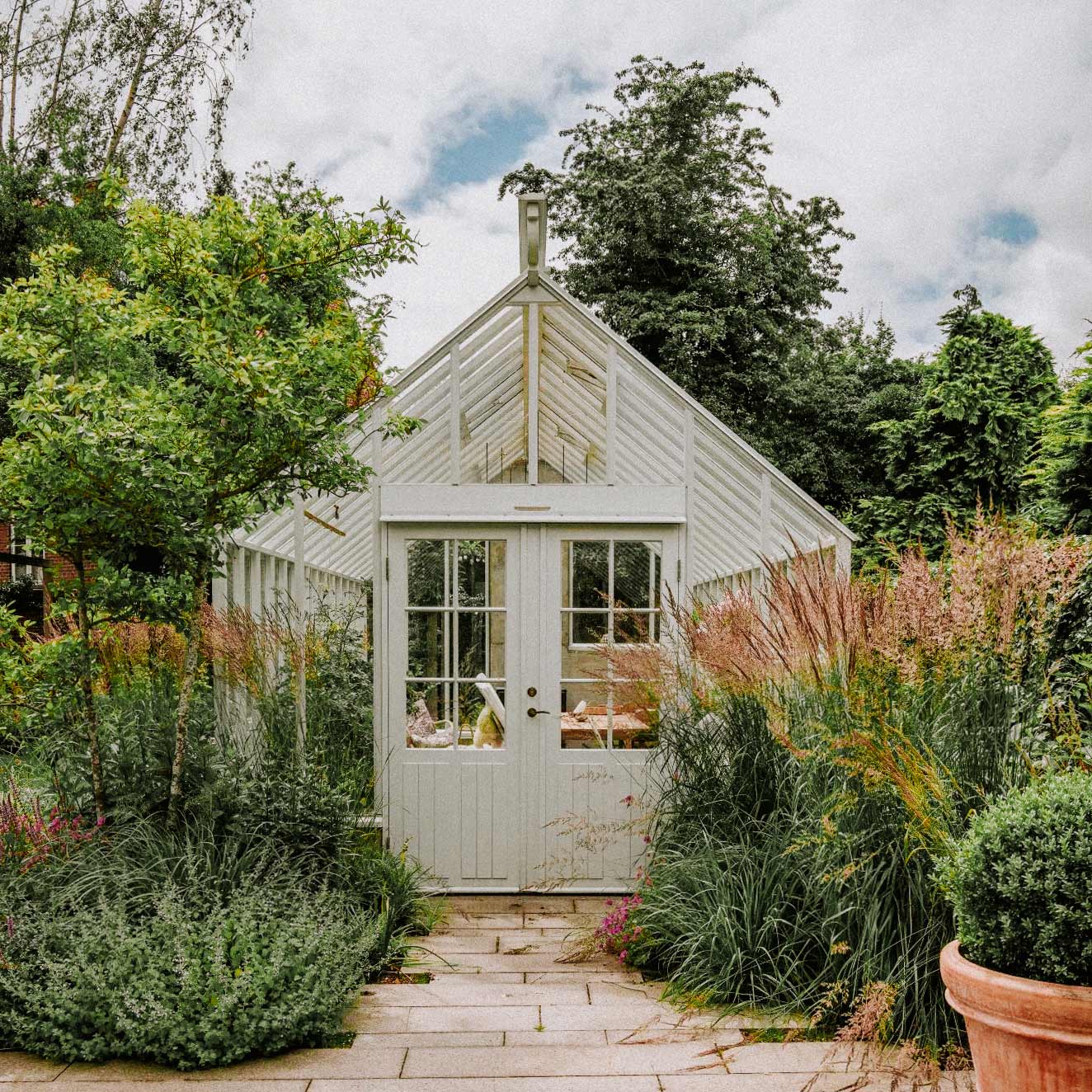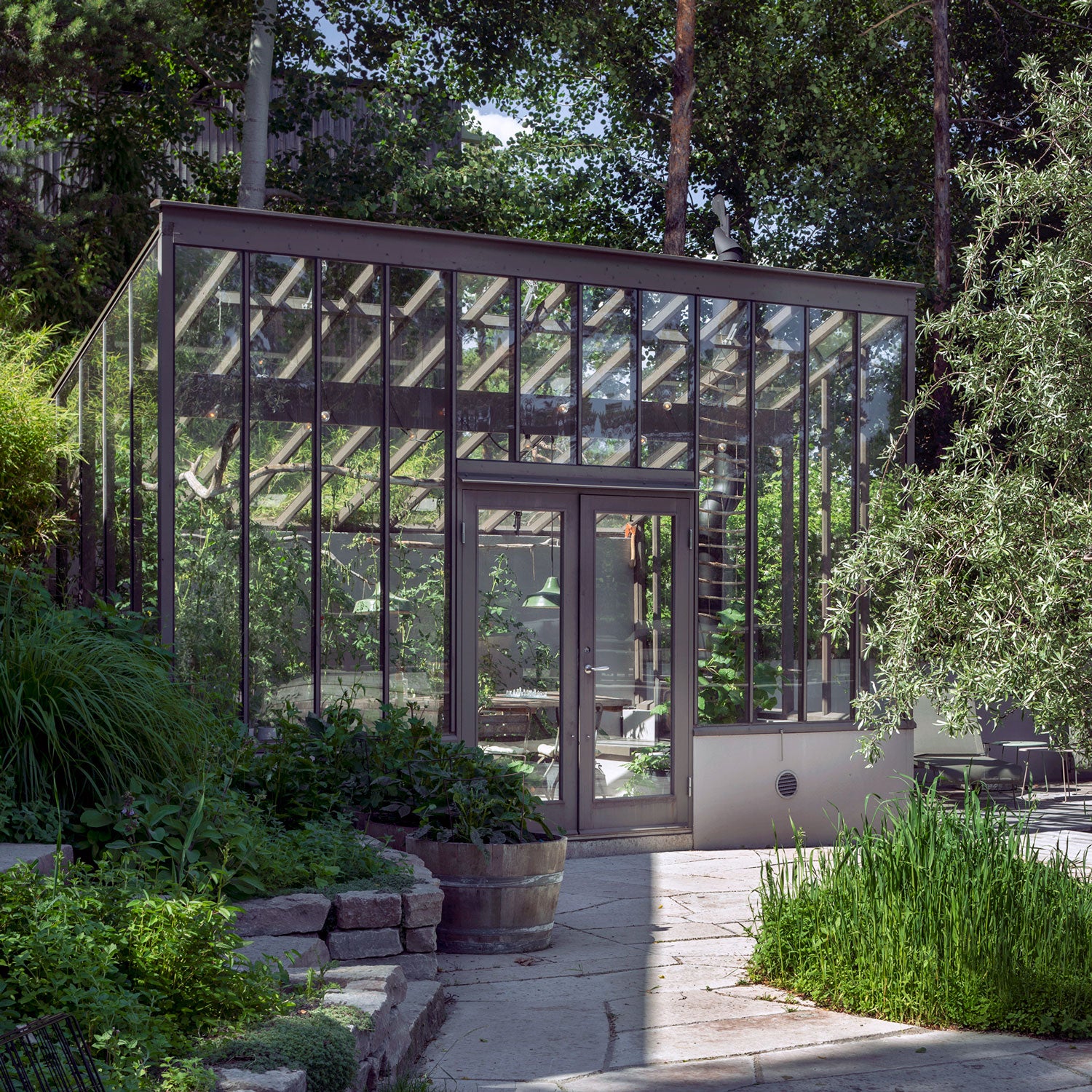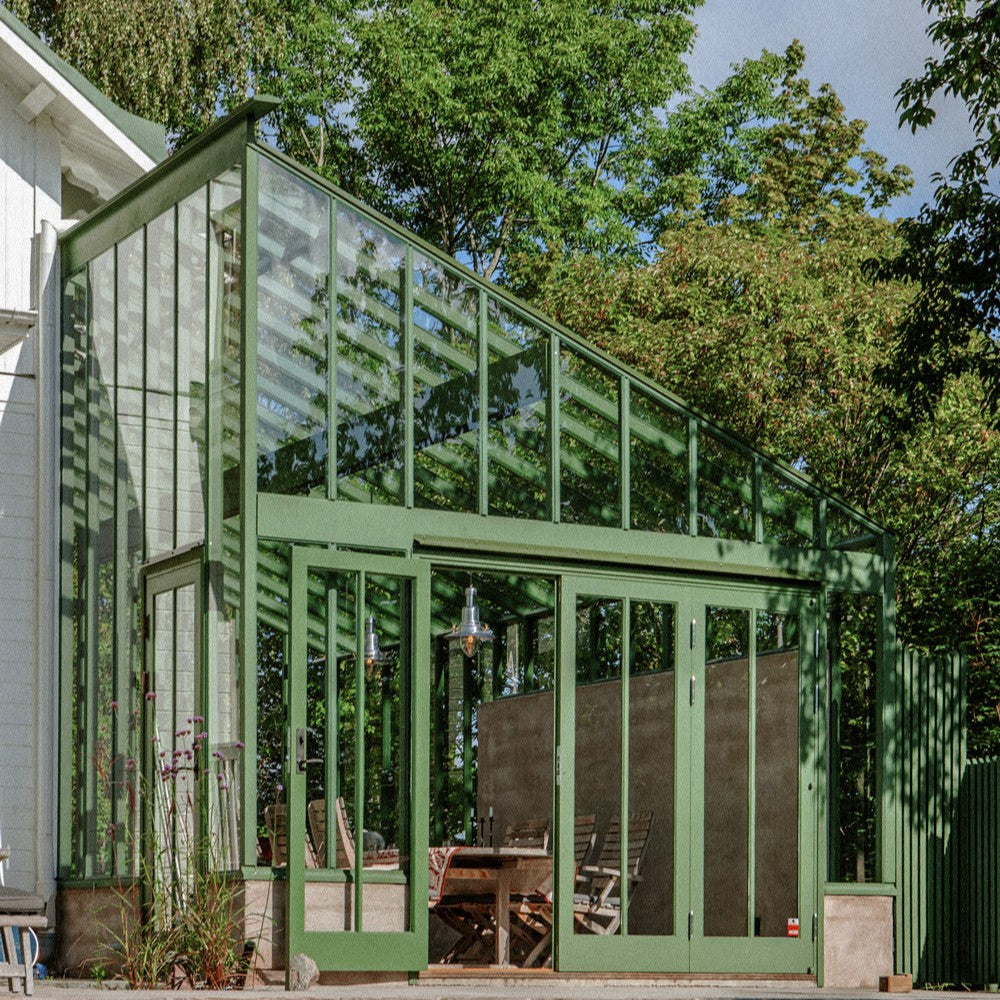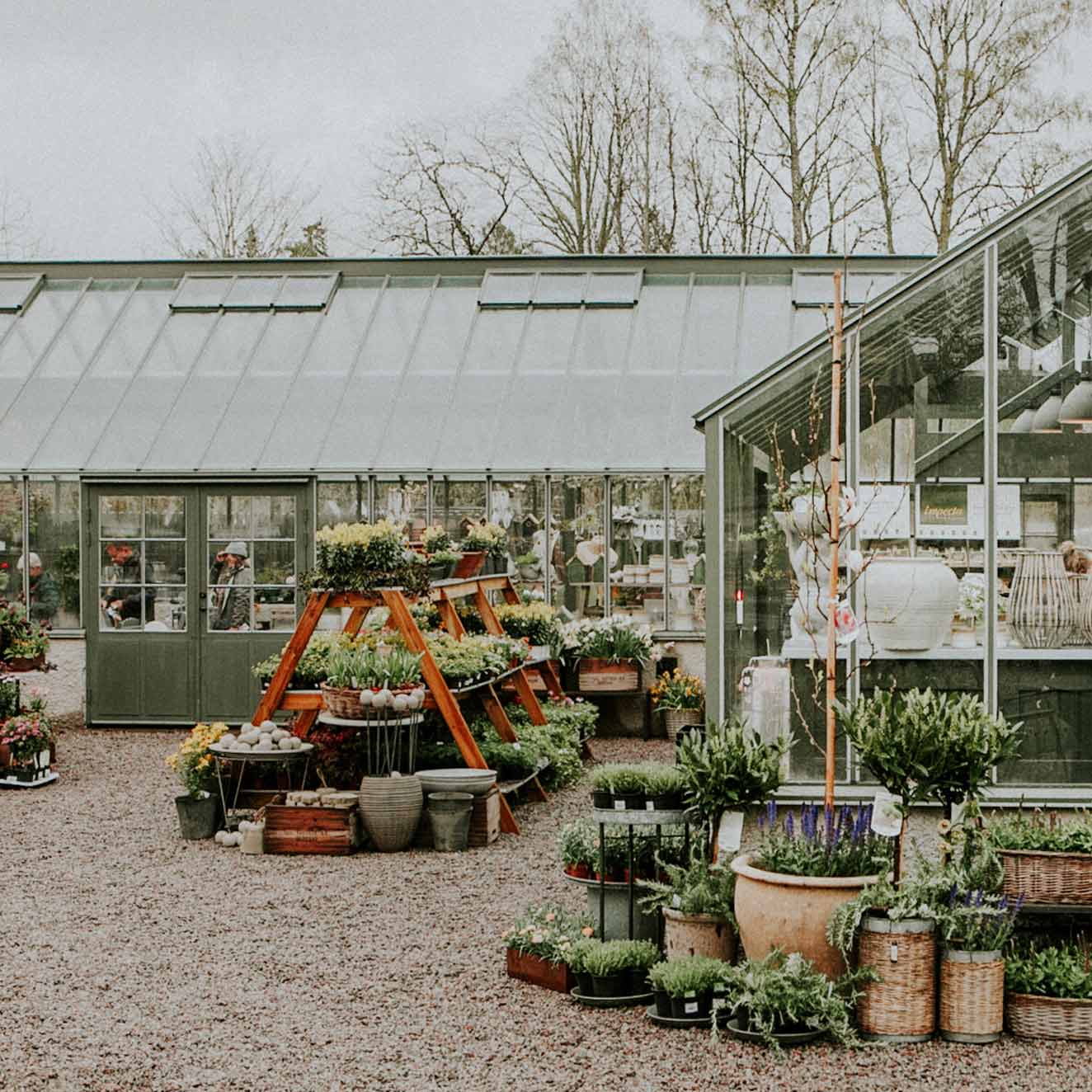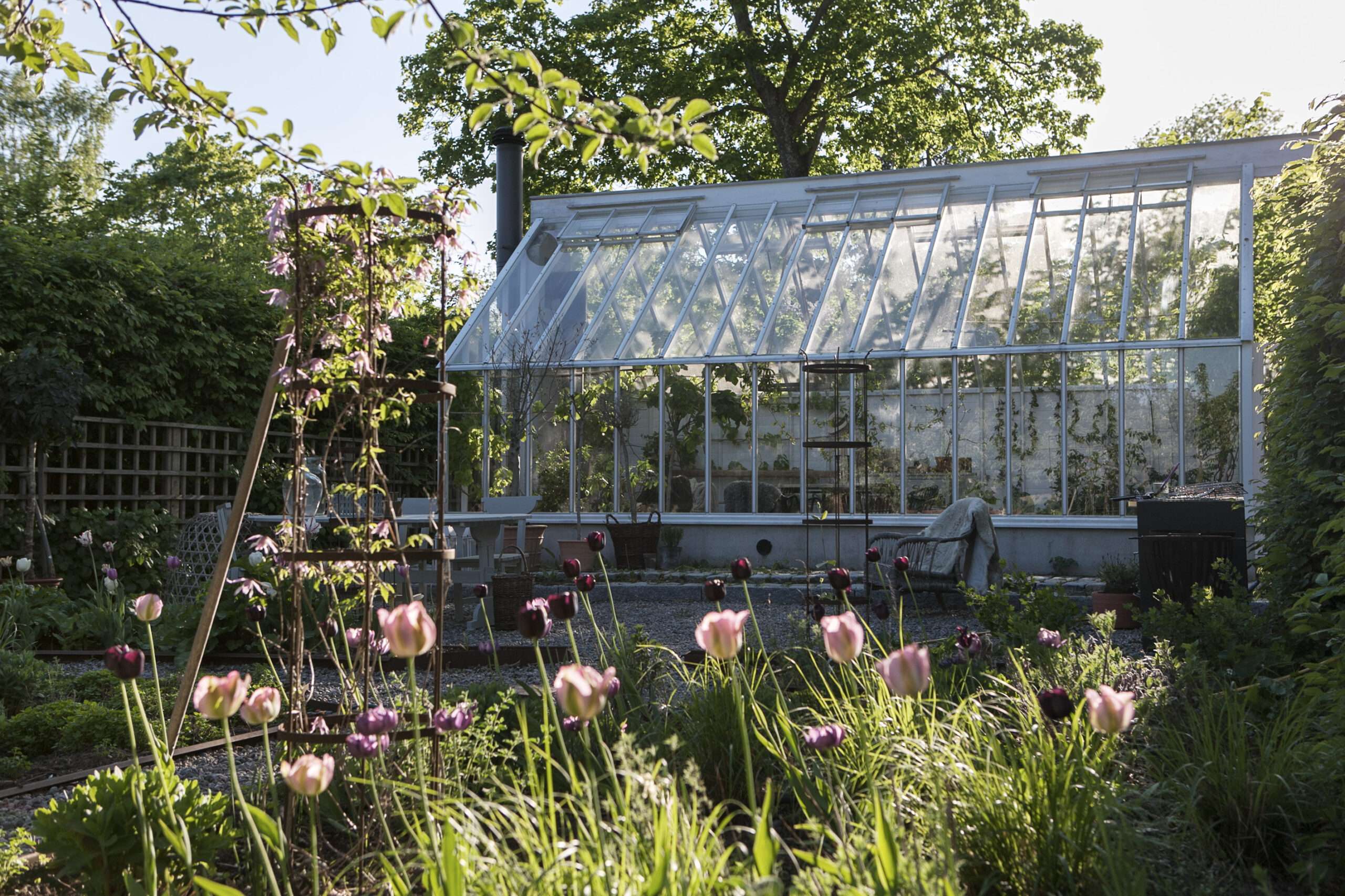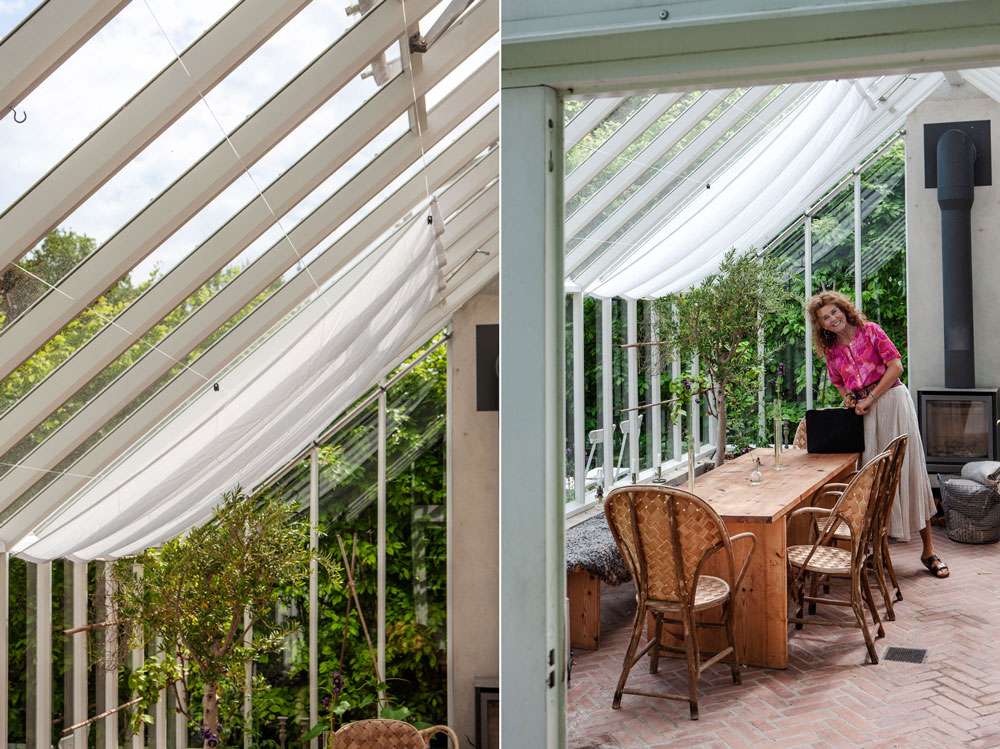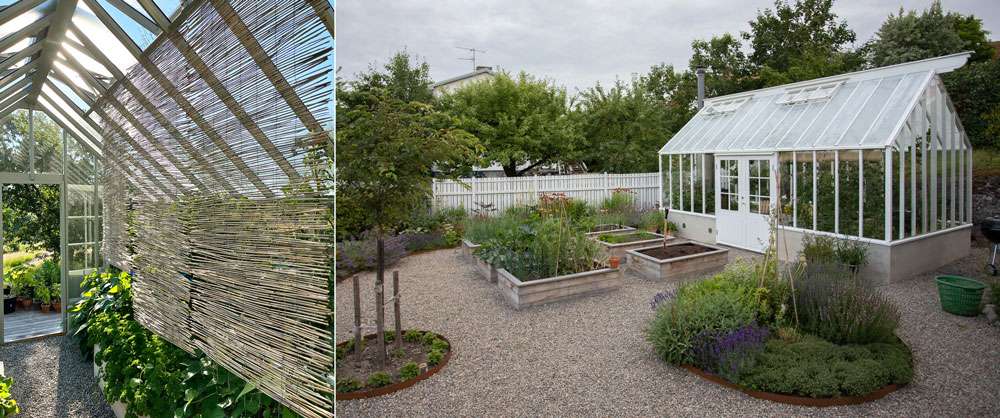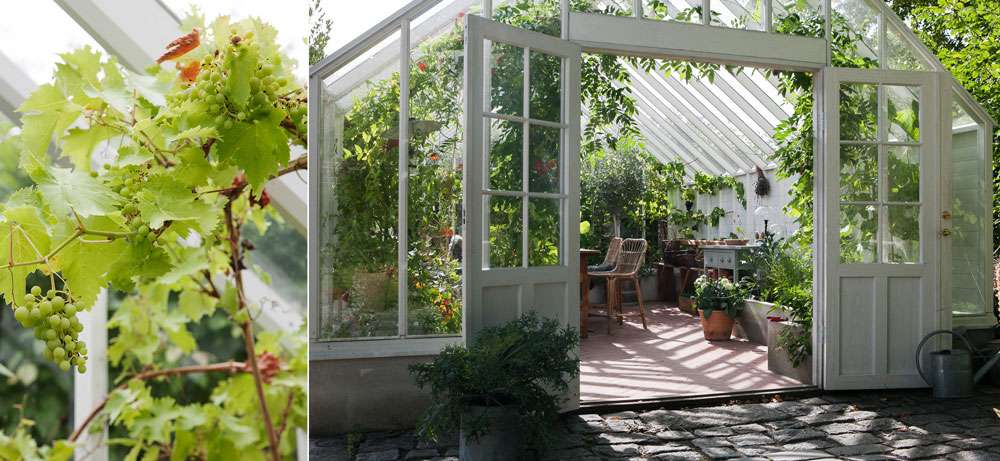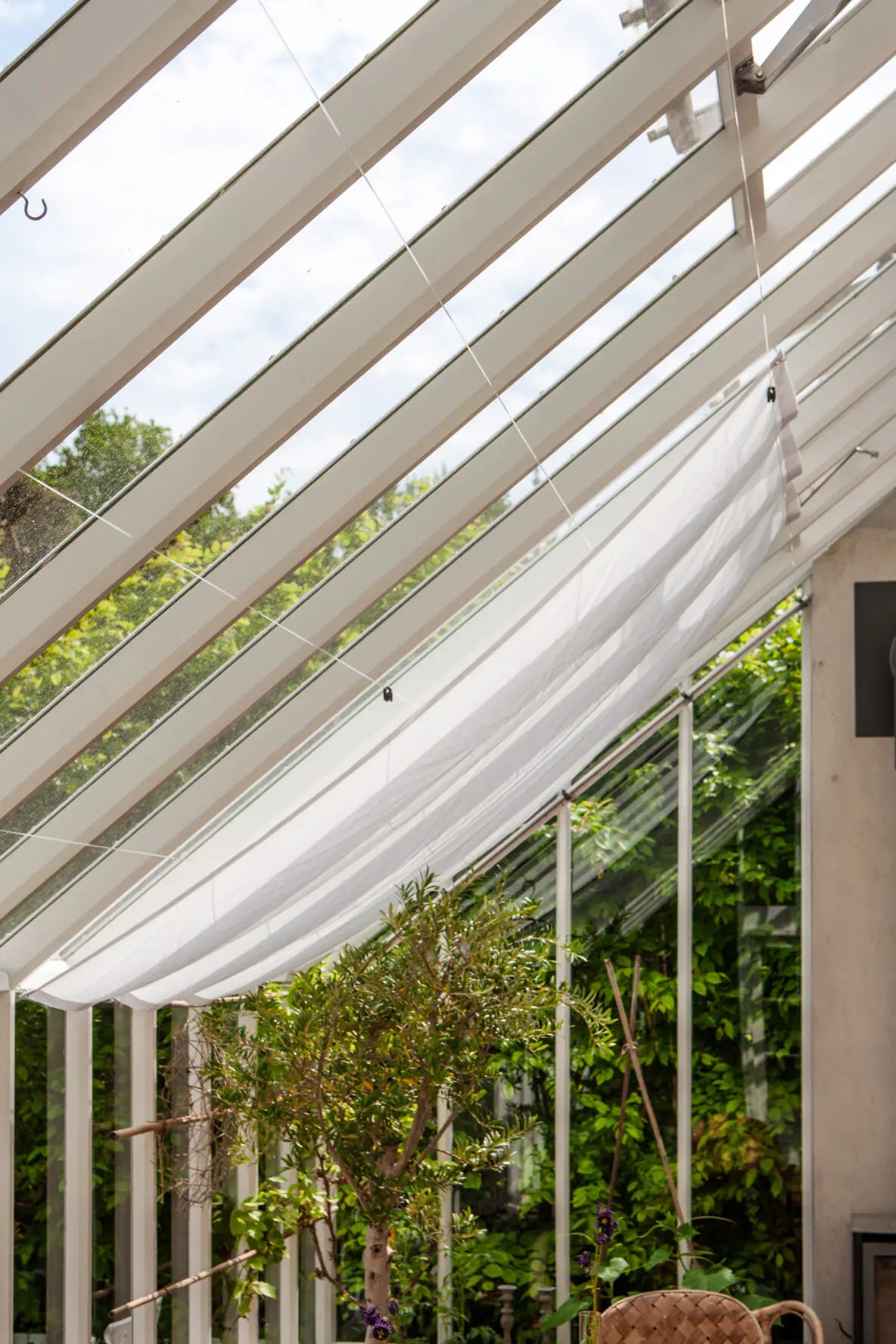
Creating shade in the greenhouse
Large shady trees can be both practical and a bit threatening. If they are old, you have to watch out for falling branches.
The wonderful shadow of the tree
Sweden Green House has developed its own shade curtain that matches the width between the slats. One curtain spans three "compartments". Contact us at our info address if you are interested in knowing more.
Control the shadow as you wish
An alternative to tree shade can be adjustable shade curtains. The curtains can also add feeling. If you choose a white and slightly stricter fabric, it gives an elegant and sober impression, if you choose a slightly coarser fabric instead, you get a more rustic feel. Shade curtains that are mounted on ropes or wires along the ceiling can be pushed sideways and in this way you can constantly regulate where there should be shade.
But there are also other types of solutions where you simply hang smaller curtains or blinds on hooks in the ceiling – a super simple and useful method when you grow a lot and may have difficulty getting both climbing supports for the plants and running lines for the curtains without tangling and crashing. A big advantage of wooden greenhouses is that it is so easy to screw in a hook where it is needed, so that the solutions can be flexible and completely adapted to your needs this particular year.
Remember to choose a fabric that can withstand the climate in the greenhouse and won't become ugly or even moldy from high humidity.
Beautifully arranged curtains in sections.
Another option is reed or bamboo blinds. If you have plenty of reeds in a bay near where you live, take the opportunity to harvest them in the winter and make your own reed blinds - easy and cheap for the handyman. If you are not so handy, there are bamboo blinds to buy. A very beautiful alternative.
Reed blinds that can be arranged in different ways depending on shade needs. On the right, a greenhouse roof with shade paint.
Shadow color
This whole painting thing about the roof isn't so bad either. There is a special shade paint that should be painted on the outside of the roof, which is easily done with a long-handled roller. Then you have a nice shading layer on the glass for the rest of the season. It can withstand "normal" rain, but if it rains all summer, the paint will thin out... but then we rarely need shading. Shade paint makes the greenhouse reminiscent of old-time growing environments, where the glass was always whitewashed to dampen the sun's rays. It looks nice, and sometimes it's nice to avoid curtain constructions, just splash on a little paint, and it's done - quite practical.
Grapevine is one of the greenhouse's most grateful shade plants. Wisteria is vigorous-growing but very stylish.
Wine and other plants
We have left the most beautiful and perhaps in its own way the most natural shading of a greenhouse for last – namely the climbing plants. Letting a grapevine, kiwi, or wisteria form a green and shady roof in the greenhouse creates that very special greenhouse atmosphere. Just imagine being able to set a table in the greenhouse under vines, on a late summer day. It feels like the very essence of greenhouse joy.
However, the shadow becomes quite deep with climbing plants, the plants screen the sun rather than filtering it. For cultivation, there can sometimes be a little TOO much shade with climbing plants on the roof, but of course it depends on how much you prune the plant. A grapevine can be thinned quite extensively on leaves so that you get a fair amount of light scattering, which is why wine is also so popular as a pergola and greenhouse plant, you can simply model it a little as you like, without it being damaged. To create a feeling and beauty in the greenhouse, climbing plants are unbeatable, but not everyone is blessed with the space and opportunity for a perennial climbing plant, in which case you can always invest in an annual – bell vine, fig leaf pumpkin, black eye, the flower of the day.
Summer is finally here and with it our need for shade increases. Play up the shade in a beautiful way in your greenhouse, the possibilities are many and with flexible solutions you will have both a more beautiful and more useful greenhouse room this summer.
